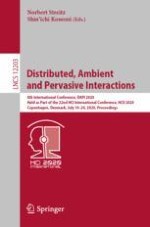2020 | OriginalPaper | Buchkapitel
Dynamic Consent: Physical Switches and Feedback to Adjust Consent to IoT Data Collection
verfasst von : Henrich C. Pöhls, Noëlle Rakotondravony
Erschienen in: Distributed, Ambient and Pervasive Interactions
Aktivieren Sie unsere intelligente Suche, um passende Fachinhalte oder Patente zu finden.
Wählen Sie Textabschnitte aus um mit Künstlicher Intelligenz passenden Patente zu finden. powered by
Markieren Sie Textabschnitte, um KI-gestützt weitere passende Inhalte zu finden. powered by
